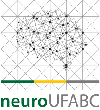Banca de QUALIFICAÇÃO: BRUNA PETRUCELLI ARRUDA
Uma banca de QUALIFICAÇÃO de DOUTORADO foi cadastrada pelo programa.STUDENT : BRUNA PETRUCELLI ARRUDA
DATE: 08/11/2023
TIME: 14:00
LOCAL: remoto
TITLE:
EFFECT OF MELATONIN ON NEUROINFLAMMATION AND BRAIN PLASTICITY AFTER PERINATAL ASPHYXIA
PAGES: 61
BIG AREA: Ciências Biológicas
AREA: Morfologia
SUBÁREA: Citologia e Biologia Celular
SUMMARY:
Perinatal asphyxia is a global public health problem that affects approximately 60% of low birth weight premature newborns and leads to mortality or neurological disorders. To study this condition, we used a global and non-invasive model of neonatal anoxia in P1 rats, which simulates the clinical conditions of premature infants. Among the different changes caused by this model, the most notable are the decrease in the volume and neurogenesis of the hippocampus, as well as impairments in learning and memory. To date, the only therapy available to reduce the consequences caused by asphyxia is hypothermia, but it cannot be applied to premature babies, which makes it essential to search for other therapeutic agents for this population. That said, melatonin is a hormone with antioxidant and anti-inflammatory action that has demonstrated effectiveness in treating different brain injuries. Therefore, our objective is to evaluate the effect of melatonin on cell death, neuroinflammation, behavior and adult hippocampal plasticity in Wistar rats after neonatal anoxia. For this, neonatal rats weighing between 6-8 g (P1) were subjected to neonatal anoxia for 25 minutes and then resuscitated. 5 min, 24 h, and 48 h later, they received i.p. of melatonin (15 mg/kg). To date, 72h after anoxia, the animals have been euthanized for analysis of cell death, microglial activation and reactive astrogliosis. At 6 and 7 weeks, the animals were subjected to the following tests: object recognition, y-maze and Barnes maze to analyze learning and memory, and open field and elevated plus maze to analyze anxious/hyperactive behavior. At P72, the animals were euthanized to analyze hippocampal plasticity. As partial results, melatonin decreased cell death caused by anoxia, and both the vehicle anoxia group and the melatonin anoxia group had fewer GFAP-positive cells in the CA1 of the hippocampus. In the object recognition test, melatonin decreased the exploration time of the new object compared to the vehicle anoxia group. In the open field test, melatonin decreased exploratory behavior after neonatal anoxia, and in the elevated plus maze test, the vehicle anoxia group spent more time in the open arms. At P72, melatonin reduced the impairment in neurogenesis after neonatal anoxia. Therefore, melatonin reduced the damage caused by neonatal anoxia both in the acute period and in adulthood.
COMMITTEE MEMBERS:
Presidente - Interno ao Programa - 1893240 - RAQUEL VECCHIO FORNARI
Membro Titular - Examinador(a) Externo à Instituição - CARLOS ALEXANDRE DOS SANTOS HAEMMERLE - UFPR
Membro Titular - Examinador(a) Externo à Instituição - LUCIANA PINATO - UNESP
Membro Suplente - Examinador(a) Interno ao Programa - 1887027 - FERNANDO AUGUSTO DE OLIVEIRA RIBEIRO
Membro Suplente - Examinador(a) Interno ao Programa - 1872537 - MARCELA BERMUDEZ ECHEVERRY
Membro Suplente - Examinador(a) Externo à Instituição - LUIZ FERNANDO TAKASE - UFSCAR




